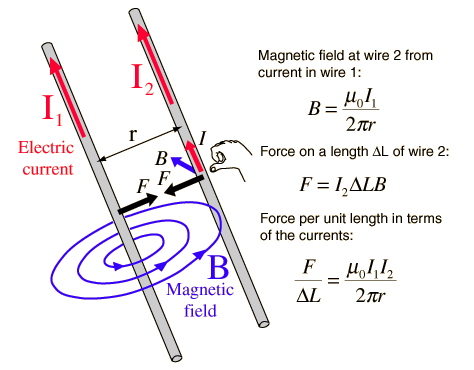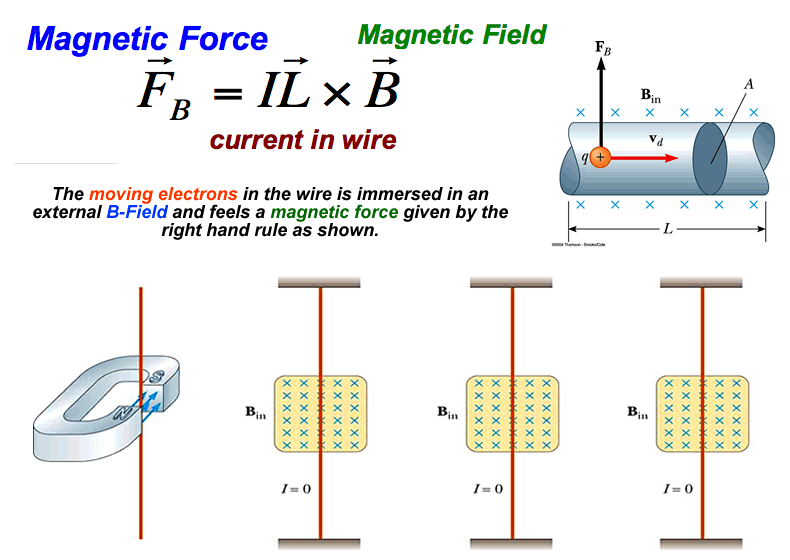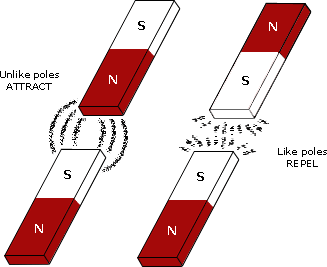Magnetic Fields and Magnetic Forces
Magnetic Fields arise from current flows. In
the drawing below, a Solenoid is shown:

A Solenoid is a wire connected to the poles of
a battery (source of voltage not shown in the picture)
that has been coiled as shown above. The
flow of current through the coil produces a magnetic field. To see how
this works, consider the simpler case of one wire:

The current flows upward producing a magnetic field whose field lines
wind circularly about the current flow. The direction in which the field
circles is given by the right hand rule. As viewed from the North
(top), the field circles in the counterclockwise sense. Magnetic fields
obey the Principle of Superposition. So whenever
we have two fields, the field where they occupy the same space is simply the
sum of the two individual fields. In this way, we may study very
complicated field configurations by adding up the contributions from each
part of the system.
Q: How do currents interact with each other (through their
magnetic fields)?
The interaction is described by the Lorentz Force
which has the consequence of

The way this works is a little tricky, but let's think about it.
Wire 1,
produces a magnetic field at the location of wire 2. This magnetic field,
B interacts with the current to produce a force.
Wire 1 produces a field that circles around the wire as shown.
The
charged particles then feel a force as they move through the field. The
direction of the force is shown on the above figure.
- The current
flows upward in wire 2 and the field B at the wire is into the paper.
The force is perpendicular in direction to both the current and B
-
The direction is found by laying the back of your right hand in the
direction the current flows
with the orientation such that your fingers curl toward the direction
of the magnetic field B.
- In this configuration, your extended thumb points
in the direction of the force (the Lorentz Force).
(For the mathematically inclined, the direction of the force is given by the
curl of I and B, I X B.)
This has the consequence that for
currents which flow in the same direction, the magnetic force pulls the wires
together. Q: Do currents always attract, is this
true in general?
No, parallel currents (same direction) attract each other while
anti-parallel currents (oppositely directed currents)
repel each other.
This has the consequence that when a current (particle beam)
moves through a magnetic field, it is deflected:

In a less obvious way, this also says that
magnets when placed in the vicinity of other magnets
force each to align as:

|